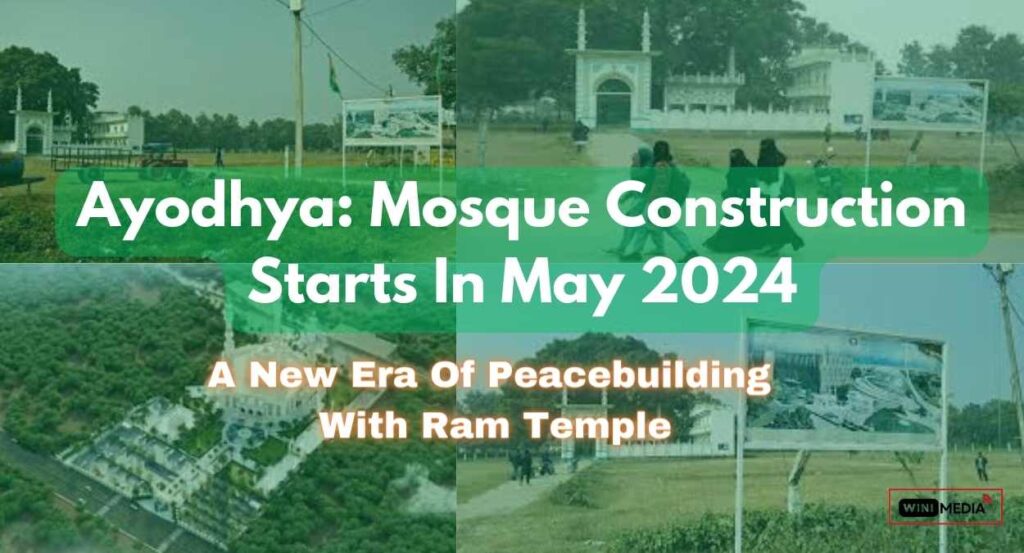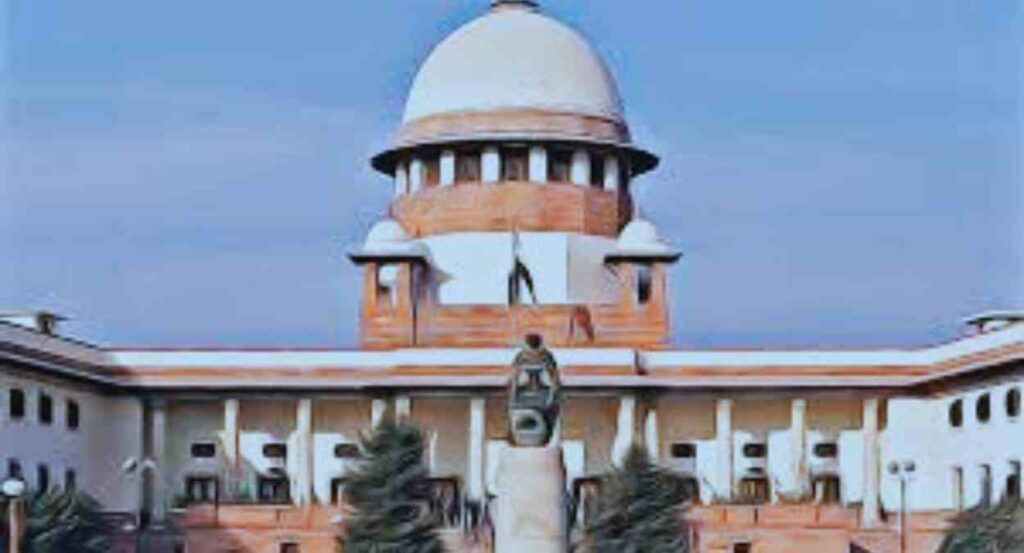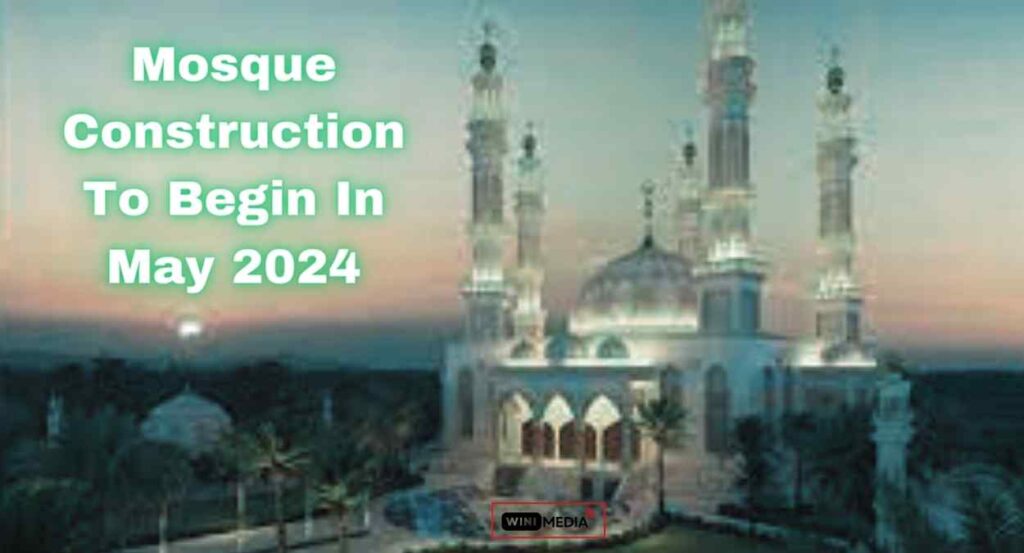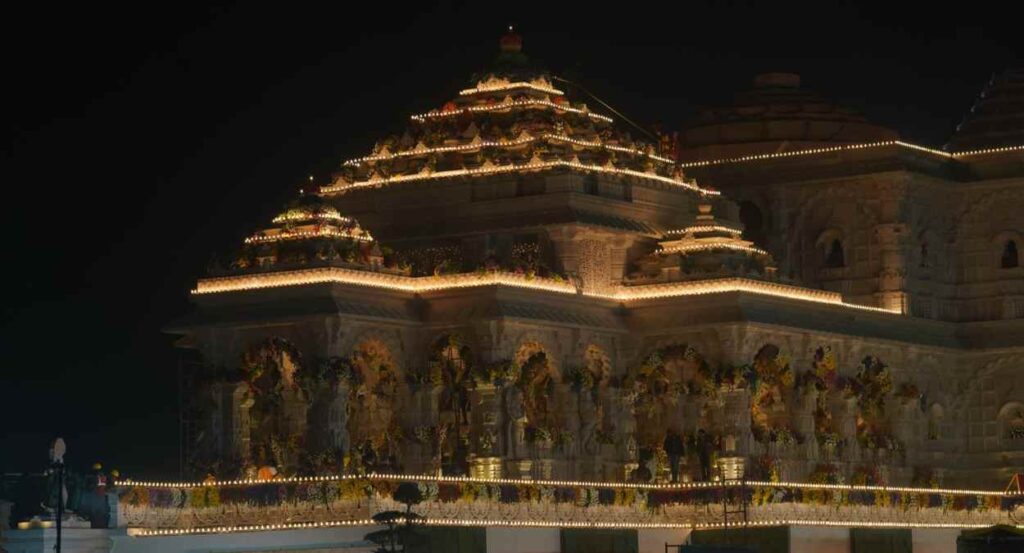{ Ayodhya, Babri Masjid, Ayodhya mosque construction, Ram Mandir construction, Ayodhya mosque, Ram mandir, Ram temple, Hindu-Muslim relations, communal harmony, Supreme Court verdict, interfaith reconciliation, peacebuilding }

The northern Indian city of Ayodhya carries deep spiritual significance for both Hindus and Muslims. After decades of bitter conflict, recent developments give hope that Ayodhya is embarking on a transformational journey of reconciliation. The inauguration of a resplendent new Ram Temple on 22 January 2024 and the upcoming construction of a mosque from May 2024 together presents a monumental opportunity to heal inter-community relations.
Ayodhya Mosque Construction: The Genesis of the Dispute
To fully appreciate the promise of the present, we must understand the pains of the past.
The origins of the dispute date back nearly 500 years. The first Mughal Emperor Babur constructed a mosque in 1528 in Ayodhya, known as Babri Masjid.
In the 1980s, Hindu groups claimed that the mosque was built after demolishing a preexisting Ram Temple that marked the birthplace of Lord Ram. The Hindu community’s demands to rebuild the Ram Temple at the disputed site intensified over time.
Several petitions were filed, arguing that the site was the birthplace of Ram, making it of immense spiritual value for Hindus worldwide. However, the Muslim community contested these claims.
The Demolition and its Aftermath
Tensions escalated in 1992 when Hindu kar sevaks marched to Ayodhya and demolished the Babri Masjid, leading to communal riots across India that claimed over 2,000 lives.
The incident left a deep scar on the collective psyche of both communities. It highlighted that any resolution would require the utmost sensitivity.
For decades thereafter, the dispute raged in the courts. In 2003, the Archeological Survey of India found evidence of a non-Islamic structure under the demolished mosque.
Finally, in November 2019, the Supreme Court unanimously ruled to allot the disputed land for the construction of a new Ram temple. It granted an alternative site for a new mosque in Ayodhya to the Sunni Waqf Board.

Supreme Court Verdict Opens Path for Ram Temple
The apex court verdict, though contentious for some, provided a legal resolution both communities could abide by. It paved the way for treasures of devotion to manifest peacefully.
Construction of the Ram temple began in 2020 after a groundbreaking ceremony. Built across 57 acres at a cost of ₹1800 crores, the intricately carved temple combines ancient construction techniques with modern engineering marvels.
The Ram Mandir temple is set to be inaugurated by PM Narendra Modi on January 22, 2024. Expecting over 200,000 devotees, the grand opening event promises to be a significant gathering
By finally fulfilling the longstanding wishes of millions of Hindus globally, while also respecting Muslim sentiments, the Supreme Court decision marked the initial steps of reconciliation.
Fund Collection Highlights Hindu Unity
Remarkably, over 40 million donors helped raise more than ₹5500 crores for building the temple. Even the smallest contributions – from students, farmers, and daily wage earners – highlight that this mass movement spanned all sections of society.
The fund-collection campaign also generated awareness about the temple in far-flung villages through religious congregations and door-to-door canvassing. This expansive Hindu mobilization was executed peacefully through established legal processes.

Ayodhya Mosque Construction to Begin in May 2024
The Sunni Waqf Board received the alternative land for the Ayodhya Mosque Construction in February 2021. However, the Indo-Islamic Cultural Foundation (IICF) trust overseeing construction faced difficulties in raking up resources and drafting designs.
But in January 2024, IICF announced that the Ayodhya Mosque Construction process will finally commence in May 2024 after Ramadan, and be completed over the next 3-4 years.
The state government has allotted a 5-acre site for Ayodhya Mosque Construction around 25 km from the Ram temple. The mosque will be named Masjid Mohammed bin Abdullah, foregoing Babri Masjid.
Its design incorporates traditional minarets and prayer halls. Beyond just the mosque, the complex will also house a modern hospital and research center, promoting healthcare and education.

Ram Temple & Mosque: Twin Pillars of Peacebuilding
With both the Ram temple and mosque taking shape harmoniously through legal sanction, Ayodhya now has an unprecedented opportunity to build bridges and foster social harmony between Hindus and Muslims.
Several peace initiatives have already begun at the grassroots level. For instance, Muslim craftsmen in Ayodhya were involved in sculpting the ornate pink sandstone tiles that adorn the temple’s floors and walls. Members of both faiths jointly celebrate festivals in the town.
Focusing efforts on enabling dialogue, dispelling misconceptions, and nurturing empathy between schoolchildren will go a long way. Ayodhya’s spiritual legacies can shape its identity as a thriving centre of religious tolerance.
The Ram temple and mosque thus represent the cornerstones of a new era defined by mutual understanding and respect.

Twin Monuments to Seed Lasting Communal Amity
The Supreme Court verdict, though late in coming, allowed both faiths to honour their beliefs peacefully within the domains of law.
With the redevelopment of the sacred site, Ayodhya now has a unique opportunity to script an enlightened new destiny. The coming together of the Ram temple and Ayodhya mosque can seed lasting communal amity and shared prosperity.
If both communities continue to tread the path of constructive dialogue, rediscovering their common heritage, Ayodhya could well present a model for how even the most entrenched disputes can be resolved – not through might, but wisdom.
By avoiding the mistakes of the past and embracing India’s age-old ethos of peaceful coexistence, Ayodhya’s resurgence bodes well for all of India.
FAQs For Ayodhya Mosque Construction
Q1. When was Babri Masjid built in Ayodhya?
A1. Babri Masjid was built in 1528 by Mughal Emperor Babur.
Q2. What happened in the 1992 Babri Masjid demolition?
A2. In 1992, Hindu kar sevaks demolished the Babri Masjid, leading to riots.
Q3. What was the Supreme Court verdict on the dispute?
A3. In 2019, SC allowed the construction of a Ram Temple, allotting alternative land for a new mosque.
Q4. When did construction on the Ram Temple begin?
A4. Temple construction began in 2020 after the groundbreaking ceremony.
Q5. How much did the new Ram Temple cost to build?
A5. The Ram Temple was built at an estimated cost of ₹180 crores.
Q6. When will the new mosque construction start?
A6. Ayodhya Mosque Construction will start in May 2024 and be completed over 3-4 years.
Q7. How can peacebuilding happen in Ayodhya?
A7. Interfaith initiatives, dialogue and focusing on communal harmony will promote reconciliation.
Conclusion
The inauguration of the Ram temple paid respects to the devout millions whose hearts reside with Ram in the cradle of Ayodhya. Simultaneously, preparations are underway, for Ayodhya Mosque Construction. Together, these monuments shall transform Ayodhya from a bone of contention into a blueprint for communal harmony.
Disclaimer:
The facts and dates are sourced from reputed news reports. The article is for informational purposes only.
Also Read:
The Ayodhya Ram Mandir: A 500-Year Journey From Babri Masjid To A Grand Hindu Temple
Emotional First Glimpse: Devotees Captivated By Ram Lalla Idol Of Ayodhya Ram Mandir
Discover India’s Top 25 Vipassana Meditation centre For Life Transformation
T20 World Cup 2024: India Set for High-Voltage Pakistan Clash at Innovative Pop-Up New York Stadium






























